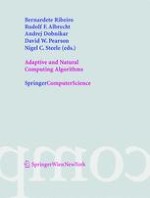The ICANNGA series of Conferences has been organised since 1993 and has a long history of promoting the principles and understanding of computational intelligence paradigms within the scientific community and is a reference for established workers in this area. Starting in Innsbruck, in Austria (1993), then to Ales in Prance (1995), Norwich in England (1997), Portoroz in Slovenia (1999), Prague in the Czech Republic (2001) and finally Roanne, in France (2003), the ICANNGA series has established itself for experienced workers in the field. The series has also been of value to young researchers wishing both to extend their knowledge and experience and also to meet internationally renowned experts. The 2005 Conference, the seventh in the ICANNGA series, will take place at the University of Coimbra in Portugal, drawing on the experience of previous events, and following the same general model, combining technical sessions, including plenary lectures by renowned scientists, with tutorials.
